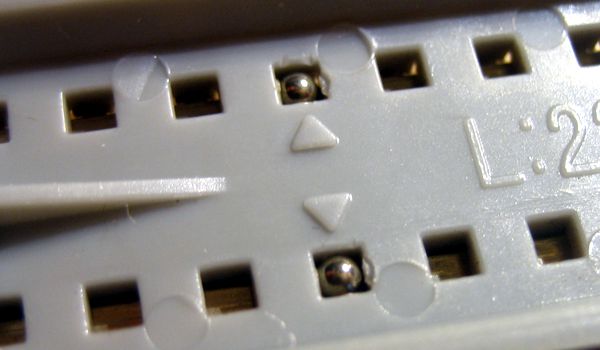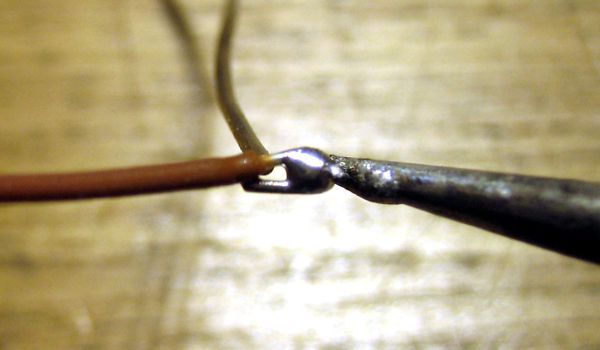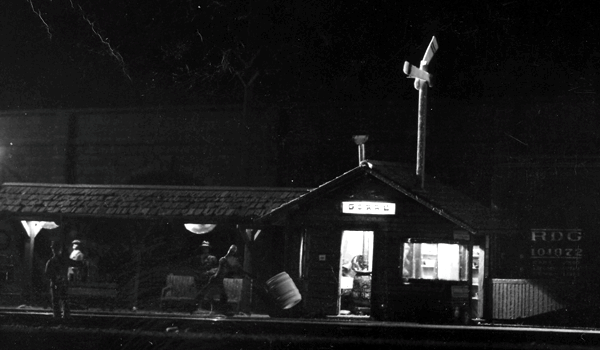Electrics
The Gorre & Daphetid is one of the simplest layouts to wire: aside from the six switches, there's track power, and the track is all treated as one block (thanks to Rokuhan directional switches, there's no need for any other track power controls); and then there are just a few buildings to light. Now was the perfect time to get the copper in place, since it all goes above the base but under everything else. The switches are all pre-wired, so the only work to be done for them was to cut slots in the subroadbed for the wires to run under the track and across to the panel area.
Next, I installed the track power feeders. There was no reason for me to spend money on Rokuhan track power wires, since I'm not using their throttle, and I'd only have to clip off the connector. So, I soldered feeders directly to the track. The layout really only needed one power feed, but I'm a big believer in redundancy; with the track permanently bonded to the subroadbed, there's no convenient way of making repairs should a connection fail. So, I decided to install four power feeds—that's eight wires total; the chances of failure were zero for all practical purposes.


My method of attaching wires to the track exploits the rail indexing pins—those little silver spheres in the plastic roadbed that hold the rails in place. First, using a cutoff disc in a Dremel, I ground away a little bit of the top of each sphere to create a flat soldering surface (above). After applying some liquid flux, I tinned them (below, which ironically restores them to their pre-ground appearance).


After stripping a bit of insulation off the end of the feeder wire, I bent the end into a tight U-shape to increase the surface area of the soldering joint. After tinning the wire (above), I attached it to the tinned index pin in the track (below), which took less than half a second, leaving no opportunity for the plastic to distort even a little. Finally, I cleaned the solder connections thoroughly with water and alcohol to remove any residual flux.


On the layout, I sliced a small notch in the surface of the subroadbed (above) to allow the wires to pass under the edge of the track (below). The result is guaranteed 100% invisible track power connections that require a minimal amount of work, and can be done to any piece of track—including other brands of roadbed track.


The last item on the wiring agenda was preparation for lighting. There exists one photo of the original G&D showing a signal, but I think this was just a photo prop, as it doesn't appear in any other image; so, there are no signals on my version of the layout. The only structures known to have been lit were the Gorre station (above) and the old mill (below).

I suspect one reason there weren't more lit buildings was because John Allen was always moving them around! I decided to add the Daphetid station to the list, so I strung three pairs of wires from the panel area to the corresponding locations on the layout, so that when the time comes to install the buildings, the power will be ready and waiting for their lights.

All of the wiring was in place literally within minutes—it took longer to shoot the photos and write the story.
Original Gorre & Daphetid images courtesy of Peter T. Prunka.
